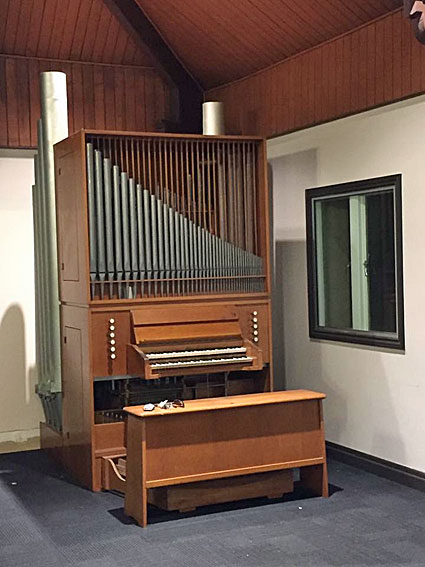
The 1961 E.F. Walcker & Cie organ
in the Choir Room at St Stephen's Cathedral
[Photograph by Andrew Cichy (February 2017)]

The 1961 E.F. Walcker & Cie organ
in the Choir Room at St Stephen's Cathedral
[Photograph by Andrew Cichy (February 2017)]
Historical and Technical Documentation by Geoffrey Cox
© OHTA 2017 (last updated June 2017)
The organ in the Choir Room at St Stephen's Cathedral was built by E.F. Walcker & Cie of Ludwigsburg, Germany. It was installed in St Mark's Anglican Church, Harbord, NSW, in 1961, having been donated by the West Family in memory of their son, William.1 After being declared redundant at St Mark's, Harbord, the instrument was acquired in November 2016 by Dr Andrew Cichy as a practice organ for his own use. It was installed and tonally refinished in the Choir Room at St Stephen's Cathedral, Brisbane, in February 2017 by Hargraves Pipe Organs of Mt Evelyn, Victoria.
This was one of several organs built by E.F. Walcker & Cie for churches in Australia in the late 1950s and during the 1960s, imported and generally installed by Peter Lawson, the firm's Sydney agent at the time. Others were supplied for St Andrew's College, Newtown, NSW (1958), St Mark's Anglican Church, South Hurstville, NSW (1960), St Peter's Lutheran Church, Canberra, ACT (1961), St Mary's Anglican Church, Concord North, NSW (1961), Christ Church Anglican Church, Gladesville, NSW (1962), St James Presbyterian Church, New Lambton, NSW (1965), Frensham School, Mittagong, NSW (1966) and Tocal College, Tocal, NSW (1969).2 With their adherence to mechanical action and neo-classical voicing, these instruments signalled the arrival of the Orgelbewegung in Australia, prior to its manifestation in the work of Sydney builders Ronald Sharp and Roger Pogson. The Walcker firm had a long and distinguished history, and these small neo-classical instruments were affordable to smaller suburban churches in Sydney at the time. They also satisfied the needs of those Sydney organists in the 1950s who were interested in Baroque repertoire.3

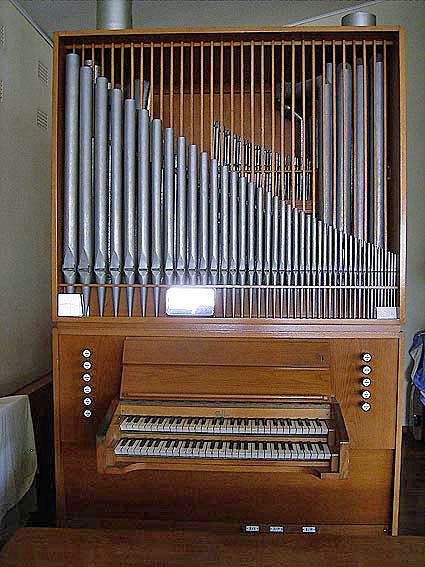
The organ in its former location at
St Mark's Anglican Church, Harbord, NSW
[Photographs by Mark Quarmby (April 2006)]
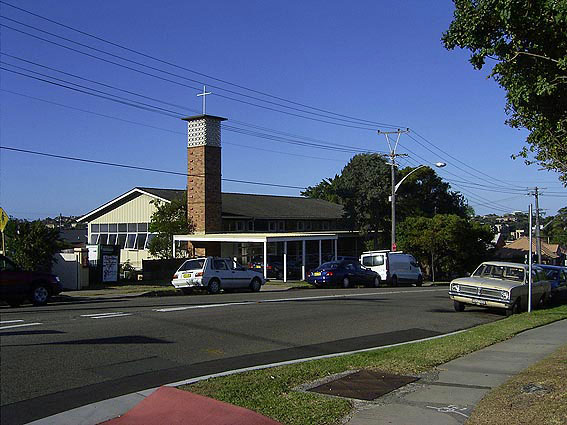
St Mark's Anglican Church, Harbord, NSW
[Photograph by Mark Quarmby (April 2006)]
The pipework is entirely unenclosed and the manual pipework is placed on a common chest inside the case. The façade comprises pipes of the Prinzipal 4ft on Manual I. The Pedal division is located at the rear of the instrument, with the bottom notes of the Subbaß 16ft (stopped metal) forming a small flat on each side.
The specification is:
Manual I |
|
Mechanical action
Compass: 56/30.4
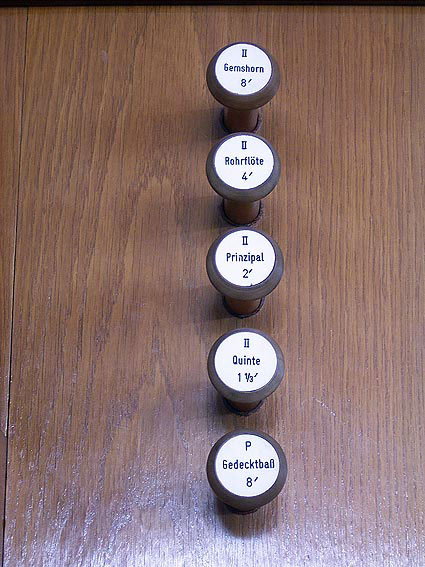
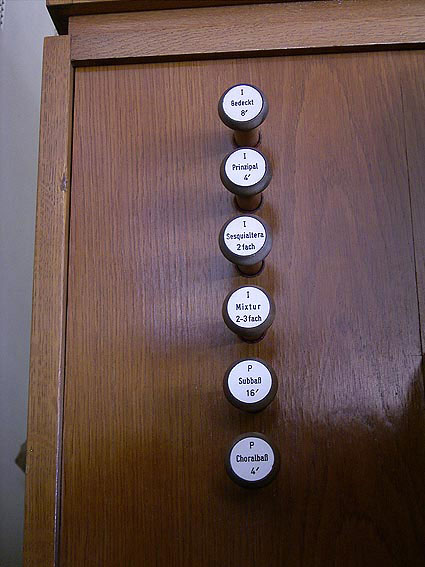
Stop jambs of the E.F. Walcker organ
[Photographs by Mark Quarmby (April 2006)]
___________________________________________________________________________
1 Details supplied to Mark Quarmby during an OMSS Organ Ramble, 17 April 2006. See: The Sydney Organ Journal, vol. 37, no. 3 (Winter 2006), p. 21.
2 John Maidment, Gazetteer of New South Wales Pipe Organs (Melbourne: Society of Organists (Vic) Incorporated, 1981).
3 James Forsyth, 'Sydney's Walcker Organs,' The Sydney Organ Journal, vol. 48, no. 3 (Winter 2017), pp. 39-41.
4 Specification from photographs shown above, and from The Sydney Organ Journal, vol. 37, no. 3 (Winter 2006), p. 21.